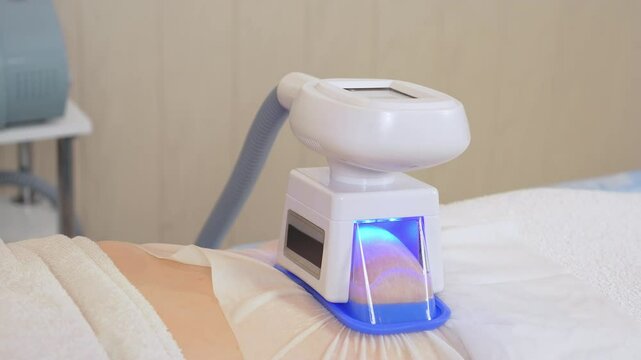Investing in Health Care Furniture: Balancing Quality and Budget for Optimal Results
In health care, the importance of quality furniture must be considered. It is not only a functional necessity but also significantly impacts patient comfort, staff efficiency, and the overall aesthetic of the facility. High-quality furniture can turn a clinical space into a welcoming environment, fostering trust and well-being among patients. Additionally, investing in durable, ergonomic pieces ensures longevity and reduces the need for frequent replacements, ultimately saving costs in the long run. As healthcare providers aim to create spaces that enhance healing and productivity, finding the right balance between quality and budget is essential for optimal results. This article will discuss key considerations when investing in healthcare furniture and how to achieve that balance.
Considerations for Investing in Health Care Furniture
When selecting furniture for a healthcare facility, there are several important factors to consider beyond just the budget. These considerations include:
Comfort and Ergonomics
The comfort of patients and staff is paramount in healthcare settings, as it directly affects their experience and productivity. When choosing furniture, it’s crucial to prioritize ergonomic designs that support proper posture and reduce physical strain. One effective option to consider is modern beam seating, which offers a sleek, space-saving design that accommodates multiple individuals while providing essential support. These seating solutions are designed with user comfort in mind, featuring contoured shapes and materials that foster a pleasant waiting area. By integrating such thoughtfully designed furniture, healthcare facilities can create inviting environments that truly cater to the needs of their patients and staff alike.
Infection Control
Choosing furniture made from non-porous, easy-to-clean materials is crucial for maintaining hygiene standards. Surfaces that resist stains and can endure rigorous cleaning significantly reduce the risk of pathogens in waiting or treatment areas. Additionally, designs that avoid hard-to-clean crevices enhance infection control efforts. By prioritizing furniture that supports effective sanitation, healthcare facilities can protect the health and safety of patients and staff, creating a safer environment for healing and care.
Durability and Longevity
Healthcare facilities are high-traffic environments that require durable, long-lasting furniture. Frequent replacements can be costly and disrupt operations, making it essential to invest in pieces that can withstand daily wear and tear. Choosing commercial-grade materials designed for heavy use is crucial in ensuring the longevity of furniture. These materials include solid wood, metal frames, and high-density foam cushions, among others. It’s also important to consider warranties offered by manufacturers when making purchasing decisions.
Aesthetics
In recent years, there has been a shift towards creating healing environments rather than purely clinical ones in healthcare facilities. Incorporating visually appealing furniture plays a significant role in achieving this goal. By selecting pieces that complement the overall design and color scheme of a facility, healthcare providers can create a pleasant atmosphere that promotes relaxation and well-being. Additionally, choosing furniture that is comfortable and welcoming to patients can help reduce anxiety and stress during their visit.
Budget
While quality is essential, budget constraints are a reality for most healthcare facilities. It’s crucial to establish a clear budget and prioritize furniture that meets the necessary criteria while staying within budget limits. This requires careful planning and research to find the best value-for-money options without compromising on quality or functionality. It’s also essential to consider the total cost of ownership, including maintenance and potential replacement costs, when making purchasing decisions.
Achieving Balance between Quality and Budget
While it’s crucial to invest in quality furniture for healthcare facilities, budget constraints often pose a challenge. To achieve a balance between quality and budget, here are some tips to consider:
Prioritize Essential Areas
When working within a tight budget, it is vital to identify and prioritize essential areas of the healthcare facility that require high-quality furniture. Focus on patient waiting areas, examination rooms, and staff break rooms, as these spaces greatly impact the comfort and satisfaction of both patients and staff. By allocating funds to these critical locations, healthcare providers can ensure that the most frequently used and essential areas are equipped with durable and ergonomic furniture. Investing strategically in these key spaces not only enhances the overall experience for patients but also boosts staff morale and productivity, making it a worthwhile approach to balancing quality with budgetary constraints.
Consider Used or Refurbished Options
Many reputable suppliers offer pre-owned furniture that has been professionally restored or refurbished to meet high standards of safety and aesthetics. This approach not only provides significant cost savings but also allows healthcare facilities to acquire high-quality pieces that may have otherwise been outside their budget. When purchasing used furniture, it’s essential to assess the condition, durability, and cleanliness of the items to ensure they meet the stringent hygiene and ergonomic requirements of a healthcare environment. By considering these sustainable alternatives, facilities can enhance their spaces while maintaining quality and spending.
Explore Financing Options
Many furniture suppliers offer financing options that allow healthcare facilities to acquire quality pieces without compromising their budget. These financing plans may include flexible payment terms, low interest rates, or discounts for bulk purchases. For example, some suppliers offer lease-to-own programs that spread out payments over a set period, making it easier for facilities to manage costs while still acquiring top-quality furniture.
Consult With Experts
Working with experienced professionals who understand the unique needs of healthcare environments can help you make informed decisions. They can provide useful insights into the best types of furniture, materials, and designs to suit specific budgetary constraints while still maintaining quality standards. Consulting with experts also allows you to explore potential cost-saving measures tailored to your facility’s needs.
Plan for the Future
When investing in healthcare furniture, it’s essential to consider long-term needs and goals. While quality pieces may initially require a higher budget, they often offer cost savings over time due to their durability and longevity. It’s also important to assess potential future needs and plan accordingly to avoid frequent replacements or additional expenses down the line.
Investing in high-quality furniture for healthcare facilities is essential for creating inviting and functional spaces that promote healing and well-being. By focusing on comfort, infection control, durability, and aesthetics, facilities can balance quality and budget. Prioritizing critical areas, exploring sustainable options, and seeking professional guidance are effective ways to find the best value without sacrificing quality. With careful planning, healthcare providers can create environments that benefit both patients and staff while staying within budget.






